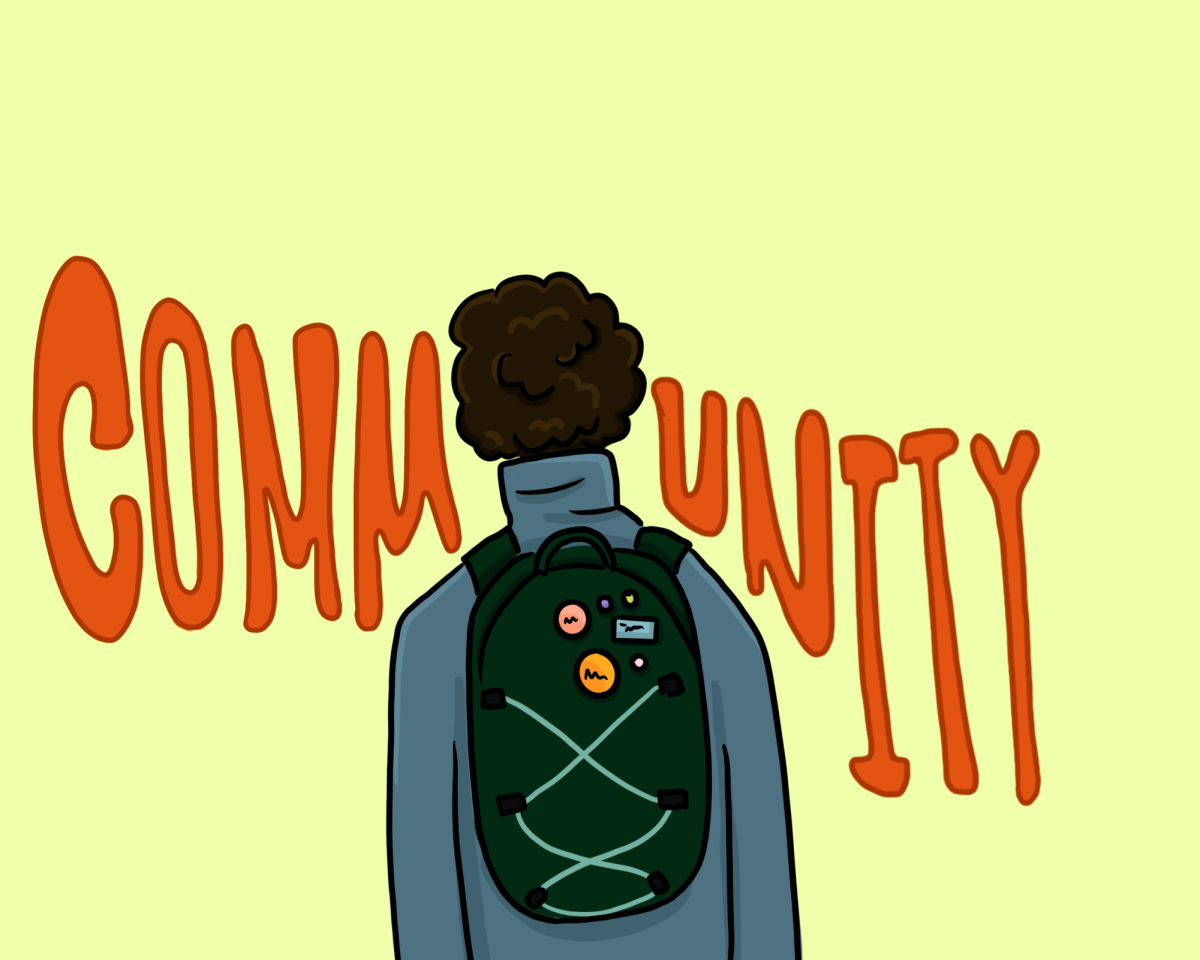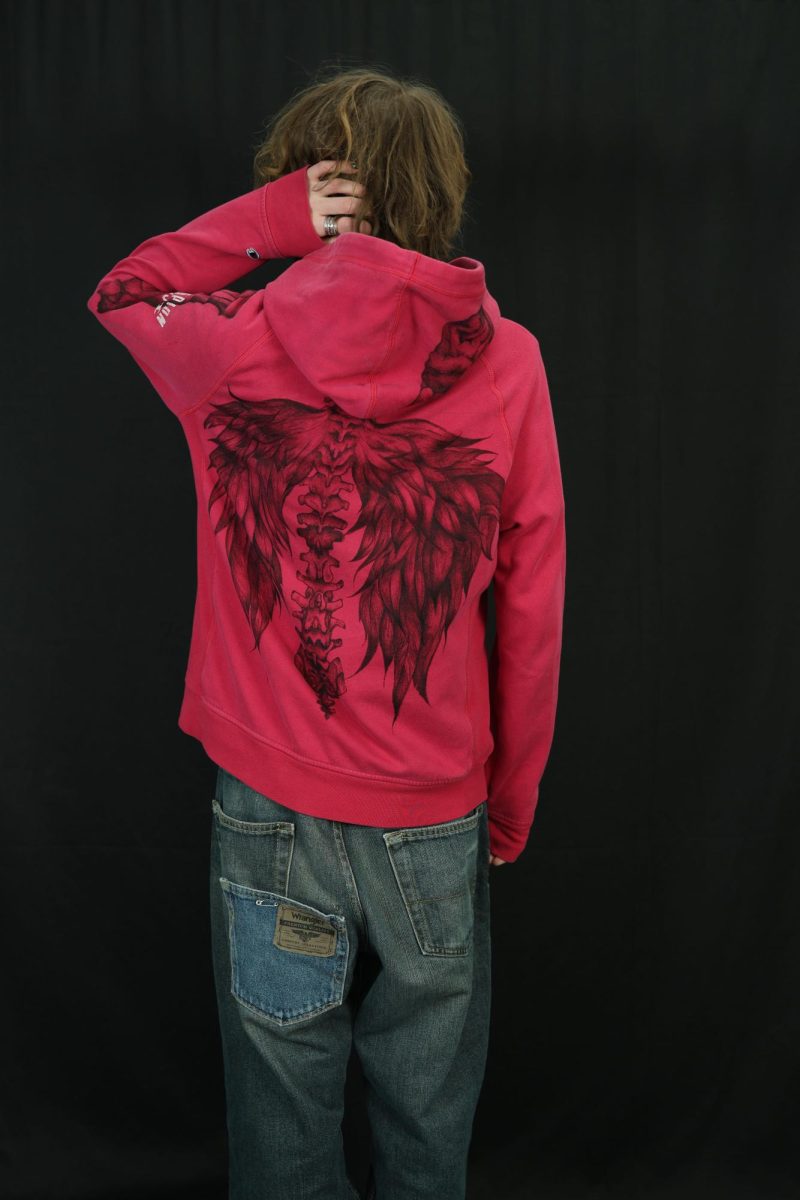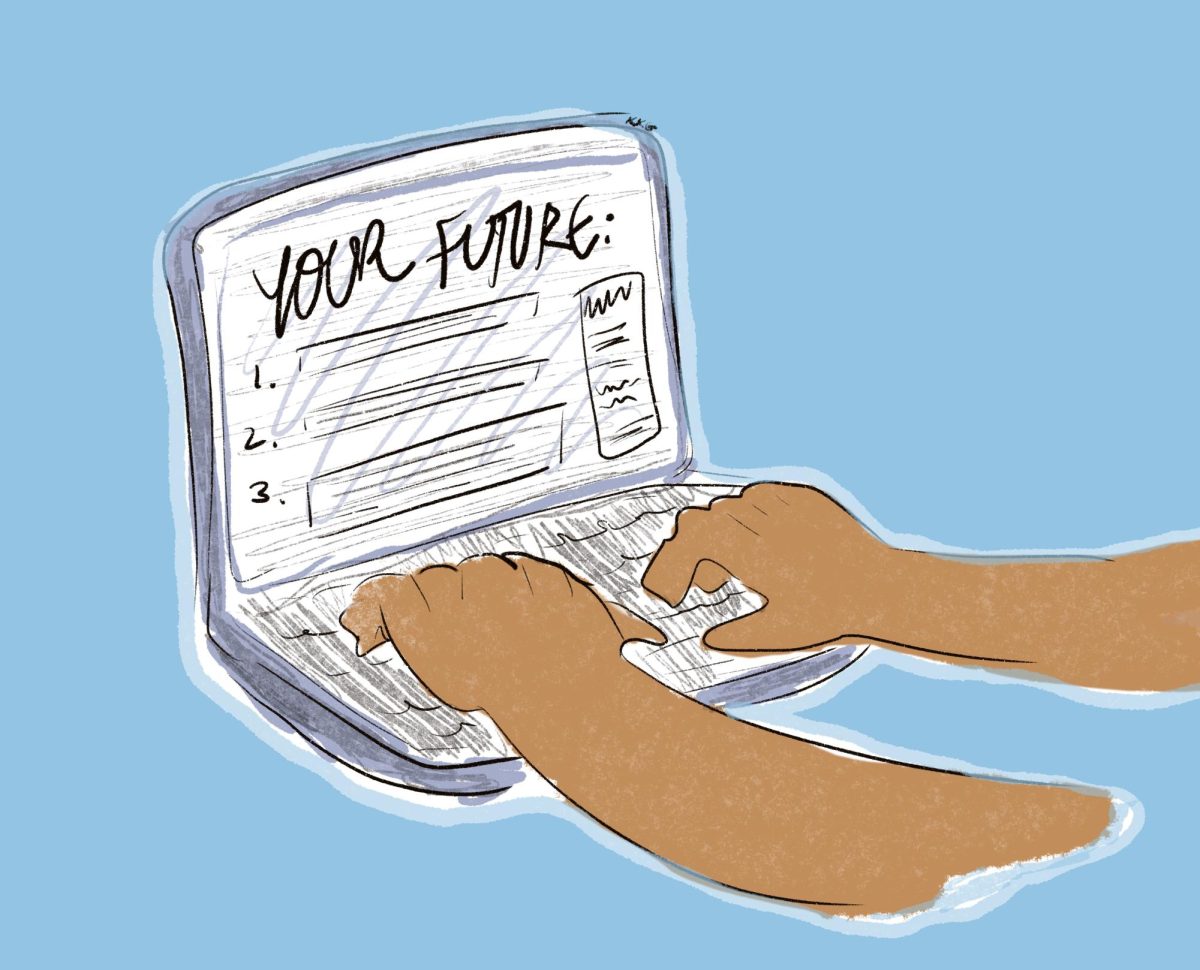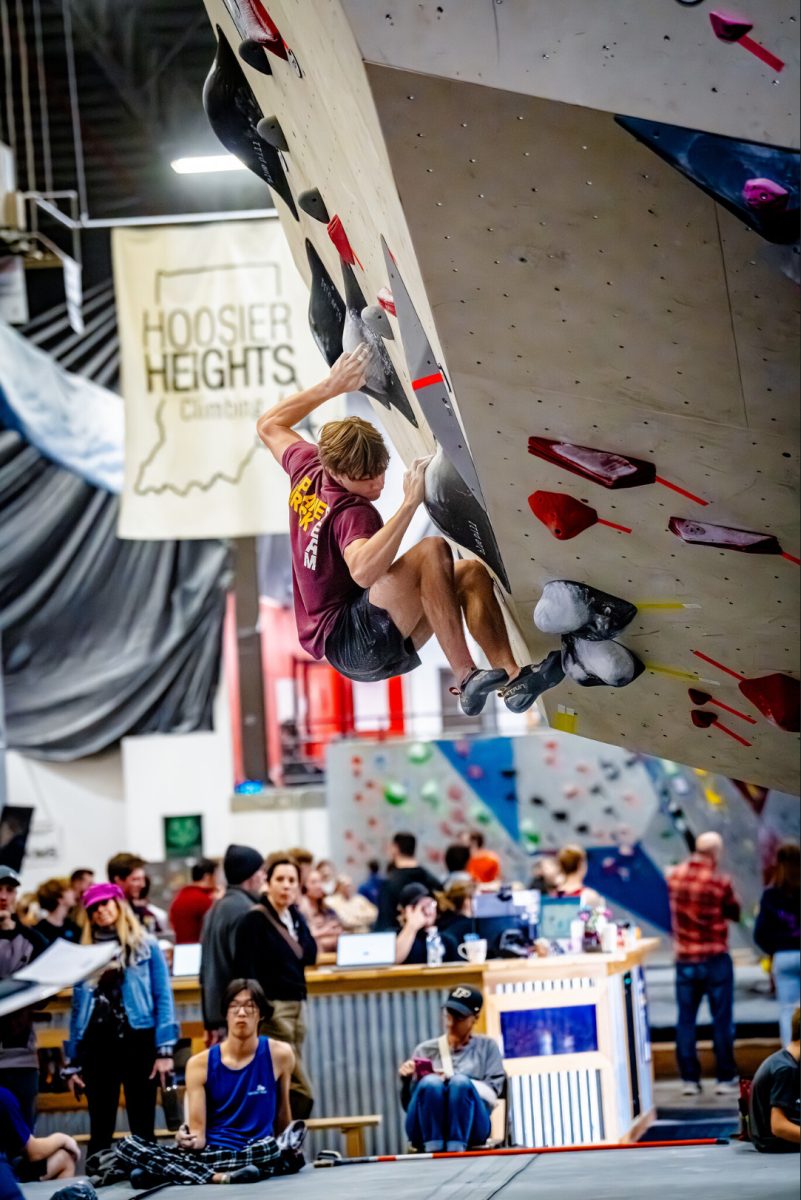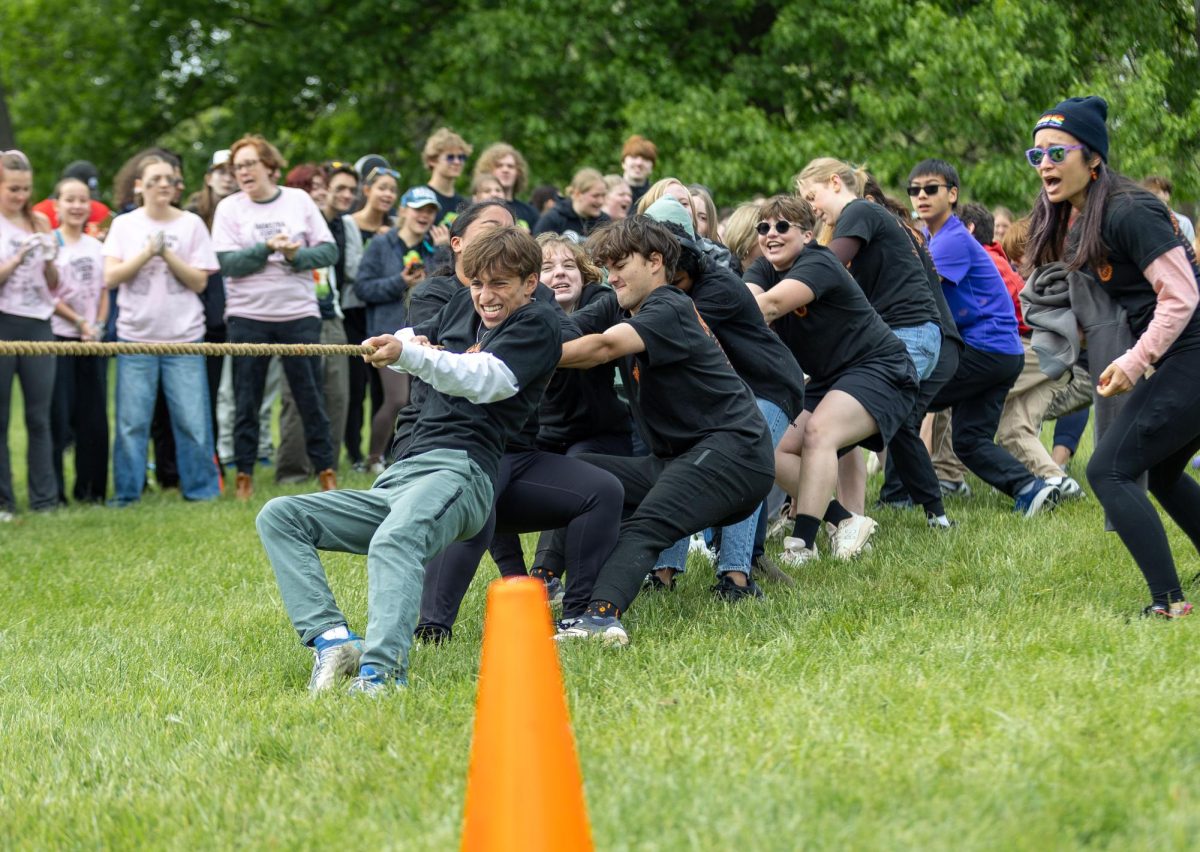
Left or right. Right or wrong.
True or false. Man or woman. In so many aspects, our society embraces the idea of a binary system: a choice of only two options. Gender is no exception.
But what if your identity doesn’t fit into the neat little check-boxes of girl and boy?
For CHS student Shawn Williams* and the genderqueer community, gender is not a choice of two checkboxes; it is a spectrum on which one can choose a comfortable identity, whether it be girl, boy, neither or something in between.
Williams does not identify as a boy or a girl but as gender variant, or genderqueer. Because of this, Williams prefers to use the gender neutral pronouns “ze”or “they” in place of “he” or “she” and “hir” (pronounced like “here”) or “their” in place of “his” or “her”.
“We all have ways that we don’t feel comfortable fitting into gender roles, and so usually the kids who are genderqueer don’t feel comfortable even with the pronouns that box people in,” explained Chloe Root, who teaches History and Gender Studies and is the staff adviser to CHS’s Queer Straight Alliance (QSA). “So if you can think of a way in which you don’t necessarily match up with the ideal of whatever gender you identify with, then just think of that to the degree that you’re not matching up with the actual pronouns that refer to you that way.”
Though it gets more press in current times, the genderqueer community is not new to this decade. The term “genderqueer” gained popularity in the 90s, when people with gender identities beyond the traditional gender binary began coming out. Root, who attended CHS and graduated in 2002, was involved in the QSA during her high school years and recalls having genderqueer friends.
Contrary to popular usage, the term “gender” is not interchangeable with the term “sex”. “Here’s the old kind of cliché: we tell [people] gender is between your ears and sex is between your legs,” explained Williams. “So basically, we use the term sex as your biological sex, male or female, or intersex, and…there’s so many options for gender, it’s basically endless. Gender, we like to talk about on the spectrum, so on one side there’s boy, on the other side there’s girl, in the middle there’s gender neutral, and basically people can decide where they fall on that spectrum.”
Sometimes a gender identity is easier to visualize than to explain verbally. At a recent meeting of the QSA, Williams illustrated hir** gender identity by drawing it on the board. Ze** drew a straight line, with a G for Girl on one side and a B for boy on the other, then highlighted the space between gender neutral and boy. “[Gender identity] doesn’t mean like a specific point; it can be like an entire portion that they feel like they fall under,” explained Williams. “So, I kind of feel like I am between gender neutral and guy.”
However, it took a long time for Williams, who is biologically female, to realize that identifying as genderqueer was a possibility. “It was something that wasn’t presented as you had any options in life to make yourself feel more comfortable. It was basically like you’re told you’re this, so you must be that,” ze explained.
Growing up, Williams always just thought of hirself as a tomboy. Ze definitely was “not your typical stereotype of a little girl,” but still identified as a girl.
Then, the summer after Williams’s sophomore year, hir friend mentioned the term genderqueer in a conversation. Though Williams had heard the term in passing before, ze wasn’t really sure exactly what it meant. After the conversation, Williams Googled “genderqueer”, not knowing that the search results would completely change hir identity.
“I came across a few sites and I started looking at them and reading, and I really understood, and it kind of freaked me out at first because I was like ‘oh my god, these people are in my head. They get exactly what I feel,’” said Williams. “I finally found something that I actually feel comfortable with.”
About half way through hir junior year, Williams started going by different pronouns in CHS’s QSA and in Riot Youth, a group at the Neutral Zone (Ann Arbor’s teen center) that creates a safe space for lesbian, gay, bisexual, transgender, queer, and questioning youth (LGBTQQ) and their allies. At the beginning of the year, Williams had begun going by the name Shawn* rather than hir female-identified birth name, and this helped the transition into a new gender identity.
Coming out to friends did not cause a lot of problems for Williams, as most of hir friends are involved in the queer community and most adjusted well to using the new pronouns. Coming out to hir family was more complicated.
Williams came out to hir mother on the way back from a college visit during hir junior year. Williams’s mother has not adjusted to Williams’s gender identity and the pronouns that come with it; she still refers to Williams as her daughter and calls Williams by hir legal name. “It’s not like she’s forcing any gender stereotypes on me, thankfully. She’s very open with my gender expression. But I don’t think she understands that it’s not just gender expression, it’s also my identity,” said Williams.
Williams also has two brothers, but ze has not yet discussed hir gender identity with them. They still call hir “she” and “my sister”.
“I don’t mind when my family uses my legal name, because they always use it. It’s just kind of hard for me because I’m constantly being told ‘I’m a girl,’ ‘I’m your sister,’ things like that,” said Williams.
Root described the feeling for a genderqueer person when referred to by incorrect pronouns: “Just think about…if someone was talking to me and used male pronouns, it’d be weird…It’s just that I don’t identify as male so it’d be kind of strange if someone was always saying the wrong pronouns. It’s not necessarily that I would assume the person was hating me or disrespecting me, it would just feel really uncomfortable all the time because that’s not the way I identify,” she said.
Currently, Williams has to endure this uncomfortable feeling often, as ze is not yet out to CHS staff members. Williams is in the process of writing an email to staff members, telling them hir gender identity and “explaining why when they call me a she and when they call me a girl…that it’s really uncomfortable for me, and it almost feels like they’re subconsciously forcing me into this box.”
For Williams, one of the reasons it is hard to come out to staff is “because of the generation…being able to be open about your gender identity is definitely new to our generation, or at least that’s what I’ve found.” And because Williams uses gender-neutral pronouns, it is difficult for people to make the transition. “I think most of the staff are actually really accepting, but what can be tough is that it’s hard to remember. So when you’re first getting used to using a new pronoun, it’s easy to slip up,” added Root.
Besides the challenge of coming out to teachers, Williams’ transition into openness has been relatively peaceful. Ze has never been bullied for hir gender identity, and has never been called an offensive term to hir face.
Still, Williams faces daily challenges. One is “the awkwardness of the bathroom and the locker room.” Though CHS did build a gender neutral bathroom, a move that Williams called “awesome”, the bathroom is not currently a comfortable place. “One, it’s almost constantly locked, and two, it is scary in there…it’s this big, echo-y white room…last time I was in there there wasn’t a mirror,” ze said. So Williams has been continuing to use the girl’s bathroom and girl’s locker room.
Luckily, this problem should soon be remedied. Dean Jen Hein explained that she is working with the school’s staff of facilities on improvements to the gender neutral bathroom. There are plans to put in the mirror.
CHS is making strides with its gender-neutral bathroom and active QSA, and the small school environment is definitely an advantage for LGTBQQ students: “I think because we’re at Community I’m able to be open and not be afraid of being open…I feel like with our small school, it’s a lot easier to know if you are getting bullied for this. You can tell other people, you can tell the staff, and they’ll know that person,” Williams said.
However, Williams is not sure if CHS as accepting for genderqueer and transgender students as it could be. In the last few years there have been incidents at CHS of bullying and harassment towards transgender students. These incidents, to Williams’ knowledge, were addressed by staff. For Williams, it is hard to know whether most people at CHS are really accepting, since, beyond the QSA, there isn’t a lot of open conversation about genderqueer identity.
Root agrees. Although she thinks that CHS is a more accepting environment than many other schools, she believes that “it’s still not a safe place to be trans, it’s still not a safe place to be genderqueer, just because the world isn’t really a safe place…for these groups…in terms of being trans and gender queer, there’s still really a long way to go. And not necessarily because of any individual person in the Community, but because that’s where society’s at right now.”
According to Williams, the community of Ann Arbor as a whole also has a long way to go to improve its acceptance level. Ann Arbor does have helpful resources for LGTBQQ students, such as the Riot Youth program at the Neutral Zone and QSAs or GSAs in almost every school. But for Williams and other LGBTQ students, this is not quite enough.
“People always say ‘Oh, this is such a liberal, accepting town’…but it could be better,” said Williams. “I just feel like in our school system, a lot of kids still have a lot of bias, a lot of kids still…they’re not educated on stuff, or I feel like there’s a lot of opportunities for kids to be openly homophobic, openly transphobic, and nobody will do anything about it.”
Both Williams and Root agree that the road to a more accepting CHS and a more accepting Ann Arbor will need to be paved by education. “I think a lot of it is just educating people about the vocabulary and about the issues that genderqueer and trans kids face,” said Root. “And also just relating a little bit more, because I think that’s the thing, is that people hear “transgendered” or they hear “genderqueer” and they think that’s something that they could never understand, but…when we’re talking about gender norms those things affect everybody. And so I think a lot of it is just making that leap between your own experience and understanding someone else’s and being empathetic.”
Riot Youth and the CHS QSA are working on spreading awareness about issues faced by the queer community. Last year, the QSA gave presentations to forums at the beginning of the year about understanding basic terms in the queer community. This year, the QSA is working on conducting a Q&A session with teachers about different gender identities. And through a program called Gayrilla Theatre, Riot Youth teens perform plays based on true stories of Ann Arbor LGBTQQ students in order to educate adults and teens about the issues the queer community faces. “[Gayrilla] is really powerful, and it’s really impactful, and I know that’s definitely one thing that’s going on that I’m at least hoping is making some sort of difference,” said Williams.
On a more global level, Williams wishes that there would be less of a focus on the gender binary. “I think it’s really important when people start realizing that not everyone’s on the binary, that you can identify with other things…just in the recent few months I’ve known a lot of people who just came out as genderqueer because they realized the binary is not where they fit; they’re trying so hard to fit but it’s not them. So they come out and they feel so much better,” ze said.
Overall, finding a comfortable identity beyond the binary has had an extremely positive impact on Williams’ high school experience. “I feel a lot happier. I feel healthier about it. Because I’m not trying to be something I’m not.” Now, Williams is fueling these positive feelings into activism in hope of changing people’s views on the genderqueer community. Ze said, “Now that I know who I am, I’m gonna fight for what I think.”
*name has been changed
**Williams, like many other genderqueer people, chooses to go by gender-neutral pronouns. See key above.



